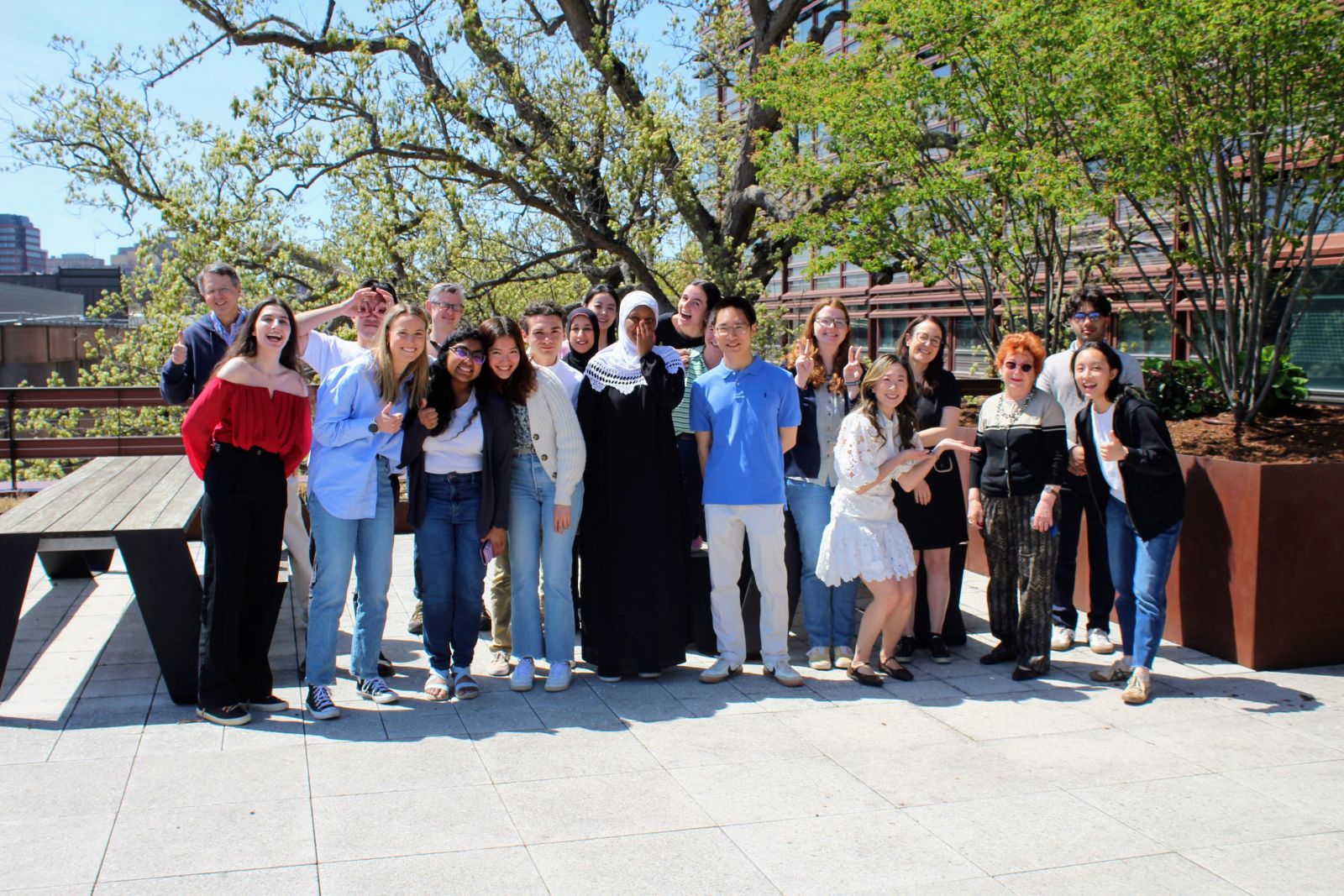Overview
Our lab studies the mechanisms by which animals sense odors, tastants, and pheromones, and translate them into behavior. We use transcriptomics, genome editing, electrophysiology, GC-MS, and optogenetics. Most of our work uses Drosophila and insects that spread global infectious disease.
Olfaction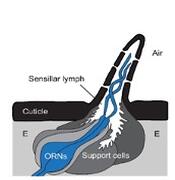
We’re interested in the remarkable sensitivity of the olfactory system, its ability to distinguish among odors, and the mechanisms by which sensory input is translated into behavioral output. One current project concerns micropeptides and non-coding RNAs in the olfactory system.
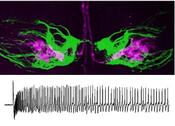 Taste
Taste
Drosophila can taste a great diversity of organic molecules. We are studying how the receptors, neurons and circuits of the taste system allow the animal to make feeding decisions and other kinds of choices. We have recently identified and characterized non-canonical mechanisms of taste coding.
Mate detection
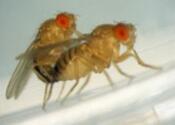 One of the most ancient and fundamental problems in biology is the identification of suitable mating partners. We found that the Ir52 genes, an evolutionary dynamic cluster of receptor genes, act in Drosophila mating behavior. Activation of the neurons that express these receptors drives a sexually dimorphic circuit and can drive males to show sexual behavior toward a distantly related species.
One of the most ancient and fundamental problems in biology is the identification of suitable mating partners. We found that the Ir52 genes, an evolutionary dynamic cluster of receptor genes, act in Drosophila mating behavior. Activation of the neurons that express these receptors drives a sexually dimorphic circuit and can drive males to show sexual behavior toward a distantly related species.
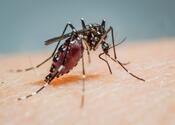
Insects that spread global disease
We are interested in how mosquitoes and tsetse flies use their chemosensory systems to detect and locate human hosts. The work may lead to new means of controlling the transmission of global infectious diseases that afflict hundreds of millions of people each year.
Other intriguing creatures
 Sometimes individuals in our lab become curious about other organisms and start studying them.
Sometimes individuals in our lab become curious about other organisms and start studying them.
Recent Publications
Baik, L., Talross, G.J.S., Gray, S., Pattisam, H.S., Peterson, T.N., Nidetz, J.E., Hol, F.J.H. and Carlson, J.R. (2024) Mosquito taste responses to human and floral cues guide biting and feeding, Nature https://rdcu.be/dXckk.
Luo, Y., Talross, G.J.S., and Carlson, J.R. (2024). Function and evolution of Ir52 receptors in mate detection in Drosophila, Current Biology https://authors.elsevier.com/a/1j-wP3QW8S6GZl
Shang, X., Talross, G.J.S., and Carlson, J.R. (2024) Exitron splicing of odor receptor genes in Drosophila, PNAS 121 (13) e2320277121.
Ebrahim, S.A.M., Dweck, H.K.M., Weiss, B., and Carlson, J.R. (2023) A volatile sex attractant of tsetse flies, Science 379 ade1877.
Dweck, H.K.M and Carlson, J.R. (2023) Diverse mechanisms of taste coding in Drosophila, Science Advances 9, eadj7032
Sizemore, T. and Carlson, J.R. (2023) Pain: The Agony and the AstC, Current Biology 33, R695-697.
Talross, G.J.S and Carlson, J.R. (2023) The rich non-coding RNA landscape of the Drosophila antenna, Cell Reports 42, 112482, 1-19.
Wang, W., Dweck, H.K.M., Talross, J.S., Zaidi, A., Gendron, J.M. and Carlson, J.R. (2022) Sugar sensation and mechanosensation in the egg-laying preference shift of Drosophila suzukii, eLife 11:e81703.
Xiao, S., Baik, L.S., Shang, X., and Carlson, J.R. (2022) Meeting a threat of the Anthropocene: Taste avoidance of metal ions by Drosophila, PNAS 119, e2204238119.
Dweck, H.K.M., Talross, G.J.S., Luo, Y., Ebrahim, S.A.M., and Carlson, J.R. (2022) IR56b is an atypical ionotropic receptor that underlies appetitive salt response in Drosophila, Current Biology, 32, 1776-1787.
Carlson, J.R. (2022) Sidney Altman and the RNA Revolution, PNAS 119 e2211692119.
Dweck, H.K.M, Talross, G., Wang, W. and Carlson, J.R. (2021) Evolutionary shifts in taste coding in the fruit pest Drosophila suzukii, eLife 10:e64317.
Ebrahim, S., Talross, G. and Carlson, J.R. (2021) Sight of parasitoid wasps accelerates sexual behavior and upregulates a micropeptide gene in Drosophila, Nature Comm. 12, 2453
Rioux, D and Carlson J.R., (2020) Olfaction: Receptors Antagonistes, Current Biology 30: R815-R817.
Baik, LS and Carlson J.R., (2020) The mosquito taste system and disease control, Proc Natl Acad Sci USA 117(52):32848-32856.
Dweck, H.K.M. and Carlson, J.R. (2020) Molecular logic and evolution of bitter taste in Drosophila, Current Biology, 30,17-30.
He, Z., Luo, Y., Shang, X., Sun, J.S., and Carlson, J.R., (2019) Chemosensory sensilla of the Drosophila wing express a candidate ionotropic pheromone receptor, PLoS Biology, 17(5), e2006619
Xiao, S., Sun, J.S., and Carlson, J.R. (2019), Robust olfactory responses in the absence of odorant binding proteins, eLife, e51040.
Soni, N., Chahda, J.S., Carlson, J.R., (2019) Odor coding in the antenna of the tsetse fly Glossina morsitans, PNAS 116(28):14300-14308 (cover article).
Chahda, J.S., Soni, N., Sun, J. Ebrahim, S., Weiss, B., and Carlson, J.R. (2019) The molecular and cellular basis of olfactory response to tsetse fly attractants, PLoS Genetics, 15(3):e1008005.
Selected Earlier Publications
Sun, J.S., Larter, N., Chahda, J.S., Rioux, D., Gunmaste, A., and Carlson, J.R. (2018) Humidity response depends on the small soluble protein Obp59a in Drosophila, eLife 2018; e39249
Joseph, R.M., Sun, J.S., Tam, E., Carlson, J.R. (2017) A receptor and neuron that activate a circuit limiting sucrose consumption, eLife 2017;6:e24992.
Larter, N. K., Sun, J. S. and Carlson, J. R. (2016). Organization and function of Drosophila odorant binding proteins, eLife 2016;5:e20242.
Delventhal, R. and Carlson, J. R. (2016) Functions of Drosophila bitter taste receptors in different neuronal contexts, eLife 2016;5:e11181.
Koh, T.-W., He, Z., Gorur-Shandilya, S., Menuz, K. Larter, K., Stewart, S. and Carlson, J. (2014), The Drosophila IR20a clade of Ionotropic Receptors are candidate taste and pheromone receptors Neuron 83, 850-865.
Su, C.-Y., Menuz, K., Reiser, J. and Carlson J. (2012). Non-synaptic inhibition between grouped neurons in an olfactory circuit, Nature 492, 66-71.
Weiss, L., Dahanukar, A., Kwon, J.Y., Banerjee, D. and J. R. Carlson (2011). The molecular and cellular basis of bitter taste in Drosophila. Neuron 69, 258-272.
Carey, A., Wang, G., Su, C.-Y., Zwiebel, L., and J. Carlson (2010). Odor reception in the malaria mosquito Anopheles gambiae Nature 464, 66-71.
Kreher, S., Mathew, D., Kim, J., and Carlson, J. (2008) Translation of sensory input into behavioral output via an olfactory system. Neuron 59, 110-124.
Ray, A., Van der Goes van Naters, W., and Carlson, J. (2008) A regulatory code for neuron-specific odor receptor expression. PLOS Biology 6, 1069-1083.
Dahanukar, A., Lei, Y., Kwon, J, and Carlson, J. (2007) Two Gr genes underlie sugar reception in Drosophila. Neuron 56, 503-516.
Ray A., van der Goes van Naters W., Shiraiwa T., and Carlson J.R. (2007) Mechanisms of odor receptor gene choice in Drosophila. Neuron 53, 353-69.
Hallem, E., and Carlson, J.R. (2006) Odor coding by a receptor repertoire. Cell 125, 143-160.
Kreher, S.A., Kwon, J.Y., and Carlson, J.R. (2005) The molecular basis of odor coding in the Drosophila larva. Neuron 46, 445-456.
Goldman A.L., Van der Goes van Naters W, Lessing D, Warr C.G., and Carlson J.R. (2005) Coexpression of two functional odor receptors in one neuron. Neuron 45, 661-666.
Hallem, E.A., Ho, M.G., and Carlson, J. (2004) The Molecular Basis of Odor Coding in the Drosophila Antenna, Cell 117, 965-979.
Hallem, E.A., Fox, N., Zwiebel, L., and Carlson, J.R. (2004) Olfaction: Mosquito Receptor for Human-Sweat Odorant, Nature 427, 212-213.
Dobritsa, A., van der Goes van Naters, W., Warr, C., Steinbrecht, A., and Carlson, J. (2003) Integrating the molecular and cellular basis of odor coding in the Drosophila antenna, Neuron 37, 827-841.
Dahanukar, A., Foster, K., van der Goes van Naters, W., and Carlson, J. (2001) A Gr Receptor is Required for Response to the Sugar Trehalose in Taste Neurons of Drosophila, Nature Neurosci. 12, 1182-1186.
de Bruyne, M., Foster, K., and Carlson, J. (2001) Odor coding in the Drosophila antenna, Neuron 30, 537-552.
Clyne, P., Warr, C. and Carlson, J. (2000) Candidate Taste Receptors in Drosophila, Science 287, 1830-1834.
Clyne, P., Warr, C., Freeman, M., Lessing, D., Kim, J., and Carlson, J. (1999) A Novel Family of Seven Transmembrane Proteins: Candidate Odorant Receptors in Drosophila, Neuron 22, 327-338.
Clyne, P., Certel, S., de Bruyne, M., Zaslavsky, L., Johnson, W., and Carlson, J. (1999) The Odor Specificities of a Subset of Olfactory Receptor Neurons Are Governed by Acj6, a POU Domain Transcription Factor, Neuron 22, 339-347.
